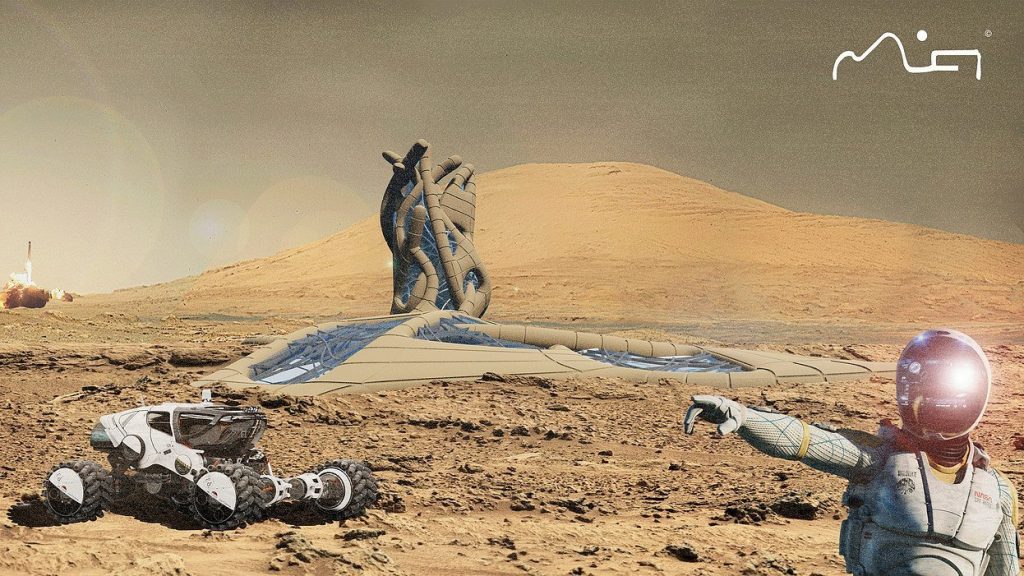The Mojave Desert will soon be home to even more 3D printed delights, with Mars City Design planning to use the location as a testing ground for future Mars settlements. The project was devised by Vera Mulyani, who always dreamt of becoming an architect of Mars.
Mulyani explains, “It is not enough to just travel to Mars and survive, now we must develop a way in which we can sustainably live and love on Mars. It is essential that we call on a new generation of thinkers and innovators to make this a reality.”

Mars City Design Challenge is “an annual competition to celebrate innovations and creative designs from all synergistic fields, focusing on creating future cities and its (amazing and surreal) lifestyles on Mars. We believe that by designing solutions that are sustainable for our life to expand on the red planet, we can then breakthrough in our technology and innovations on Earth.”
Earlier this month, Mars City Design raised over $30,000 on Kickstarter in order to help this year’s 25 finalists refine their creations with the help of aerospace engineers. This needs to be done before they are 3D printed at full scale for testing in the Mojave Desert within the next three years.
“What we’re trying to do in our workshop is to experiment,” project creator Vera Mulyani said. “The gravity on Mars is different, so the density of the building materials will be different. It’s not about an architectural project that just looks cool; we have to see how far we can push 3D printing by experimenting [with] new ingredients for the paste and eventually building in some of the most extreme places on Earth. We want to learn how we can modify what we have today so that we can use it on Mars. Once we have that answer, we can improve our tools.”
Mulyani says the goal is to establish a base of four people on Mars that can ultimately grow to a city of 1,000. Unlike most projects for the planet, she explains, this one goes “from macro to micro,” exploring first how an entire city would function and backing into individual habitats.
From the 25 finalists the Mars City Design team will choose the three best prototypes to be 3D-printed. Among the designs are:

- Neurosynthesis: a proposal for an urban settlement with a closed river system, ambulatory housing, and an artificial Martian waterfall

- Dandelion: an autonomous habitat that uses regolith, a Martian soil element, to provide sustainable source of oxygen, water, energy and nutrition
- Vertical Farms: enable food sources to be grown on Mars in a sustainable controlled environment in tight quarters, in order to limit the reliance on sporadic supply runs from Earth
- Instant Structure: employs laser explosion technology to rapidly create constructions as immediate solutions to natural disasters or war

- Mars Research Facility: a proposed research colony that uses Martian materials and computer-aided construction techniques to support human life
- The Mars Living Machine: a design that questions the most tangible aspects of how an extreme environment like Mars can shape architecture
You can follow the progress of Mars City Design on their website.
Featured image: Mars Living Design, Clara Lee. Image: Mars City Design



